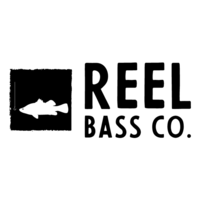
Crank N' Yank! - Different Types of Crank Baits and How To Fish Em'
Share
What's Up Yaw!? It's Ster and I’m excited to share with you the different types of crank bait lures we've been using this Summer 2024 to catch MASSIVE BASS!
Crank baits are a popular choice among anglers because they can have CRAZY! action in the water and copy the movement of baitfish and we all know the bass are bout-that-ACTION! They can be used in all different types of water and have multiple bill options with color options to fit any location. Here are some of the most commonly used crank baits:
-
Lipless Crankbaits: Lipless crankies are designed to sink quickly and have a tight wobble that mimics the movement of a fleeing baitfish. Since they're lipless, they're best in shallow water and around vegetation, where they can trigger those MEGA reaction strikes. When fishing with lipless crankbaits, it’s important to vary your retrieve speed and depth until you find one that works best for the conditions you’re fishing in. In general, I say a slow retrieve is best when fishing in cold water or when the fish are inactive. When fishing warmer water or when the fish are just feelin extra feisty use a faster retrieve.

-
Square-bill Crankbaits: These crank baits have a square-shaped bill that creates a sort of unique action. It allows them to deflect off structure and rock, which often creates noise/disturbance that triggers a strike. The short bill prevents the bait from diving too deep, so most dive less than 8 feet. Square-bills can be shallow-water killers all year long! They can go where other crankbaits can’t and get a lot of bites. In my opinion, when picking your square bill it's best to go with one that dives slightly deeper than the water you're fishing. This is to make sure the bill of the bait clips the bottom and any cover it may run into.

-
Deep Diving Crankbaits: You know those crank baits with the long, narrow, unnecessary lookin' bill?? Well yeah that long a** bill allows them to dive deep deep and reach fish that are lurking in that deeper water. Deep Dives are best used in open water and around structure such as drop-offs, ledges, and humps. Once again, it’s imperative to vary your retrieve speed and depth until you find one that works best for the conditions you’re fishing in. Slower retrieve in cold water, faster retrieve in warm water or around angry muh f'in bass.

-
Shallow Diving Crankbaits: Shallow diving crankbaits have a short, wide bill that allows them to dive quickly and run just below the surface of the water. The bills tend to be under 0.5in but are not lipless. They are best used in shallow water and around cover such as rocks, stumps, and laydowns. As always vary your retrieve speed and depth until you find one that works best for the conditions you’re fishing in.

-
Medium Diving Crankbaits: Last but certainly not least. The MID! Medium diving crankbaits are the most popular size cranks and are very effective even in waters deeper than 10 feet. These baits have a medium-length bill that allows them to dive to a specific depth range and stay there during the retrieve. Most are designed to dive to a depth of 5 to 15 feet and tend to weigh between 3/8oz and 5/8oz, so when selecting the power of your cranking rod, make sure the crank bait your rockin' falls somewhere in the middle of the rod's lure rating. MIDs are best used in open water and around structure such as drop-offs, ledges, and humps. Oh yeah and did I say to test retrieve speed and depth until you find one that works best for the conditions/area you’re fishing in...I think I did.

On a final note, when fishing with crank baits, it’s important to match the color of the bait to the color of the water you’re fishing in. Essentially in clear water, use natural colors such as silver or gold. In murky or stained water, use brighter colors such as chartreuse or fire-tiger, you know those exotics!
LOL! Once again, it's your boy Ster and I really hope this post has been helpful guys! Good luck on your next fishing trip!
